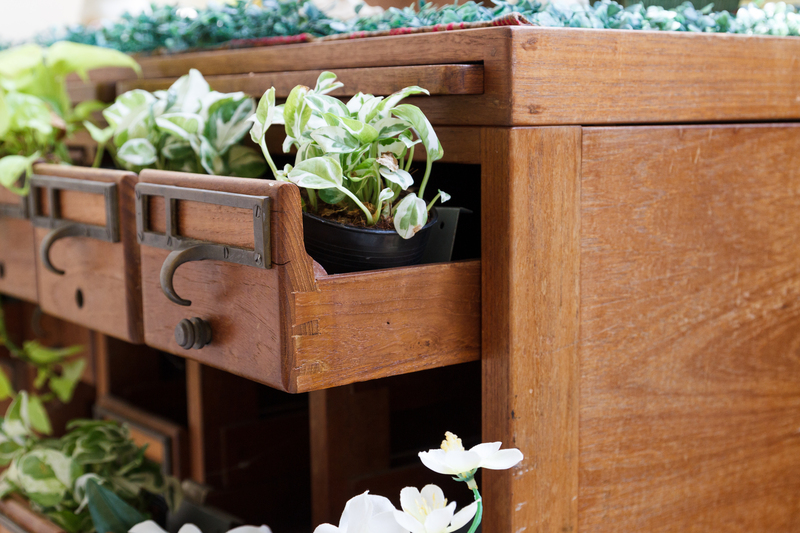Essential Tips for Safe PPE Waste Disposal at Home or Work
In today's world, the use of Personal Protective Equipment (PPE) has become a critical part of daily life both at home and in the workplace. Whether you're a frontline worker, an office employee, or simply adopting safety measures at home, knowing how to safely dispose of PPE waste is essential. Improper disposal not only leads to environmental hazards but also increases the risk of spreading infections. In this comprehensive guide, you'll discover essential tips for proper PPE waste management, ensuring both your safety and environmental protection.

Why Proper PPE Waste Disposal Matters
PPE items such as masks, gloves, face shields, and gowns are crucial for preventing the spread of viruses and bacteria. However, when these items are not disposed of responsibly, they can cause harm to sanitation workers, wildlife, and the environment. Proper PPE waste disposal helps:
- Prevent contamination of public spaces and water bodies
- Avoid accidental exposure to infectious materials
- Protect waste collectors and maintenance staff
- Reduce the risk of environmental pollution
Learning the correct way to discard used PPE is therefore vital for everyone. Let's explore the best practices for PPE waste disposal at home and work.
Understanding PPE Waste: What Needs Special Disposal?
Before diving into disposal tips, it's important to identify which items count as PPE waste. Common examples include:
- Disposable and reusable face masks
- Nitrile, latex, or vinyl gloves
- Face shields and goggles
- Protective gowns and aprons
- Shoe covers
- Surgical caps
- Sanitizing wipes used for cleaning PPE
Note: Items contaminated with hazardous materials, such as blood or chemicals, require even stricter disposal measures in compliance with local regulations.
General Principles for Safe PPE Waste Disposal
No matter where you use PPE--at home or work--the following general rules apply to PPE waste management:
- Always remove PPE carefully to avoid self-contamination.
- Place used PPE directly into a lined waste container.
- Do not throw PPE waste with regular recyclables.
- Avoid touching your face or other surfaces after removing PPE until you have wash your hands thoroughly.
PPE Waste Disposal at Home: Step-by-Step Guide
Improper disposal of PPE at home can put your family and community at risk. Follow these essential PPE disposal tips to ensure safety and hygiene:
1. Use a Separate Bin for PPE Waste
- Designate a specific, lined trash bin for used PPE only.
- Keep this bin covered and out of reach of children and pets.
- Clearly label the bin as "PPE Waste" to prevent confusion.
2. Safely Remove and Dispose of PPE
- Remove masks and gloves without touching the front surface.
- Immediately place them in your designated PPE waste bin.
- If using sanitizing wipes, discard them in the same bin after use.
3. Seal and Handle Waste Carefully
- Once your PPE bin is 3/4 full, tie the bag securely to prevent spillage or leakage.
- Wash your hands thoroughly with soap and water after handling PPE waste.
- Disinfect the exterior of the bin regularly.
4. Prevent Cross-Contamination
- Do not sort or reuse disposable PPE items.
- Do not open tied bags or remove items once discarded.
- If anyone in the household is sick or quarantined, double-bag their PPE waste and keep separate until disposal.
5. Follow Local Guidelines
- Check your local waste authority's rules for COVID-19 or biohazardous waste.
- Some areas provide special pick-up or drop-off services for PPE waste.
- Always abide by community safety measures regarding waste disposal.
PPE Waste Disposal at the Workplace
Workplaces--especially healthcare facilities, laboratories, and offices--generate significant amounts of PPE waste. Proper disposal systems are crucial for compliance and risk management.
1. Implement a PPE Waste Management Policy
- Develop written procedures covering PPE handling and disposal.
- Train staff regularly on updated disposal protocols.
- Assign responsibility to specific personnel for monitoring compliance.
2. Use Clearly Marked Bins for PPE Disposal
- Provide color-coded and clearly labeled waste bins for different types of PPE.
- Place designated PPE disposal points in high-use areas, like entrances/exits and changing rooms.
- Ensure bins have lids and are emptied regularly.
3. Safe Handling and Transport of PPE Waste
- Use durable, leak-proof bags and containers for PPE waste collection.
- Staff should always wear gloves when handling waste bags.
- Minimize manual handling--use trolleys or carts where possible.
- Transport waste directly to outside storage areas or designated hazardous waste collection zones.
4. Ensure Environmental Compliance
- Follow national and local regulations for the segregation and disposal of infectious or hazardous PPE waste.
- Partner with licensed medical or hazardous waste contractors when necessary.
- Document disposal activities to ensure auditable compliance.
5. Educate Employees and Encourage Participation
- Display instructional posters near PPE disposal stations.
- Regularly update employees on best practices and policy changes.
- Encourage prompt reporting of spills or disposal issues.
Common Mistakes to Avoid in PPE Waste Disposal
Despite good intentions, many people make crucial errors when discarding PPE. Awareness is key to preventing accidents and contamination. Here are common mistakes to avoid:
- Throwing used PPE into recycling bins--recyclable programs cannot process contaminated PPE.
- Leaving used masks or gloves in shopping carts, car interiors, or public spaces.
- Overfilling PPE waste bins, leading to overflow and potential exposure.
- Handling PPE waste without gloves or hand protection.
- Failing to wash hands after disposing of PPE items.
Avoid these mistakes to protect yourself, your family, and the wider community from potential health risks.
Environmental Impact of PPE Waste
The global rise in PPE usage during the COVID-19 pandemic led to a massive surge in plastic and medical waste. Most PPE--especially single-use items--is made from plastics such as polypropylene, which does not biodegrade readily. Incorrect disposal has already resulted in:
- Clogged waterways and ocean pollution, harming marine life
- Increased landfill burdens
- Danger to wildlife--animals can get entangled or ingest PPE items
- Microplastic pollution over time
To minimize your environmental impact:
- Only use disposable PPE when necessary.
- Switch to reusable, washable masks and face shields where possible.
- Support workplace initiatives for proper PPE waste segregation and recycling of packaging materials.
Innovative Solutions: Reducing PPE Waste
While safe PPE waste disposal remains crucial, finding ways to reduce PPE-related waste is even better for the environment. Here are some innovative tips:
1. Choose Reusable PPE Over Single-Use Whenever Feasible
- Fabric masks can be washed and reused, saving countless disposables from landfills.
- Face shields and goggles made from durable materials offer longevity and reduced waste.
2. Consider Biodegradable PPE Options
- Some companies now offer masks and gloves made from biodegradable materials.
- Check the credentials and certifications before purchasing to ensure effectiveness and compostability.
3. Encourage Proper Recycling of PPE Packaging
- Many PPE items come in recyclable packaging--even if the PPE itself cannot be recycled, the packaging often can.
- Separate clean plastic wrappers, boxes, and instructions for appropriate recycling bins.
4. Educate and Take Responsibility
- Stay informed about new PPE disposal technologies, such as specialized bins and sterilization equipment.
- Share information and raise awareness in your community or organization.

Frequently Asked Questions: PPE Waste Disposal
Is it safe to throw used masks and gloves into the regular trash?
Most local authorities recommend that used masks and gloves be disposed of in regular waste if no separate collection is available, but they must be double-bagged and sealed to prevent contamination. Always check your area's guidelines.
Can PPE items be recycled?
Generally, used PPE cannot be recycled through household or municipal recycling programs due to contamination risk. However, some specialized programs exist for certain types of PPE--consult your local government or waste management company for details.
What should I do if I see PPE waste littered in public?
If you have access to gloves and a bag, you may carefully collect the littered PPE and dispose of it in a covered waste bin. Avoid touching without protection, and always wash your hands thoroughly afterward.
Are there fines for improper PPE disposal?
Some communities and organizations have instituted penalties for littering PPE waste or improper disposal, especially in high-risk environments. Always comply with regulations to avoid fines and ensure public safety.
Conclusion: Best Practices for Safe PPE Waste Disposal
Proper PPE waste disposal is a shared responsibility--whether at home or in the workplace. By adopting the essential tips outlined in this guide, you can protect yourself, your loved ones, and the environment from unnecessary harm. Always stay informed about local rules and strive to minimize PPE waste wherever possible.
- Designate separate PPE waste bins and label them clearly
- Seal and dispose of waste bags following safety protocols
- Always wash hands after handling PPE waste
- Educate those around you about proper PPE disposal
- Choose reusable or eco-friendly PPE products when you can
By making responsible choices, you contribute to a safer, cleaner environment and help stop the spread of diseases. Let's work together for a healthier future--starting with the simple act of safe PPE waste management.
